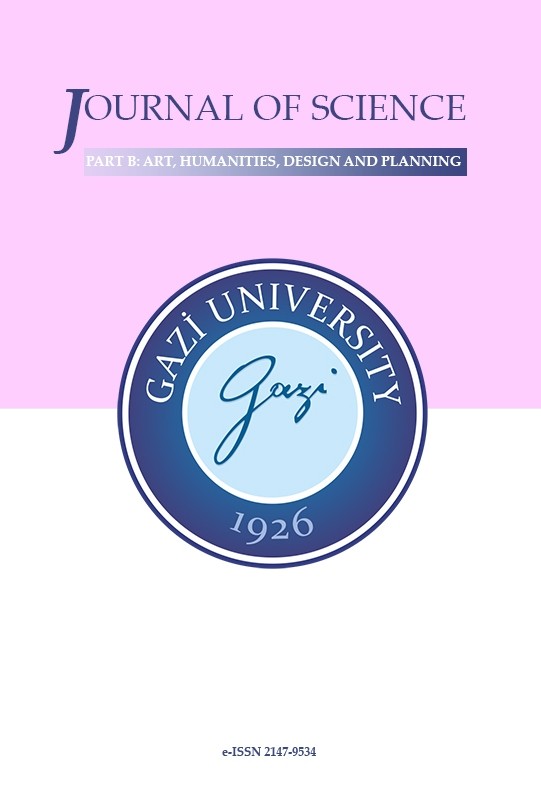GENTRIFICATION CREATED DURING CONSERVATION PROCESS IN HAMAMÖNÜ AS CULTURAL HERITAGE ZONES
GENTRIFICATION CREATED DURING CONSERVATION PROCESS IN HAMAMÖNÜ AS CULTURAL HERITAGE ZONES
The rehabilitation efforts in Turkey stand on functional differences based on economic benefits. Nevertheless, this approach treats the original characteristics of cultural heritage zones as they are mostly used like theatrical sceneries serving to changing functions. Moreover, the social and cultural aspects are neglected, forcing the unacceptable social change, the gentrification. This process is observed in Ankara-Hamamönü which has been a physical and social deprivation area, a focus of crime before rehabilitation and restoration. The area will be examined and the conclusions covering the latest situation of the past users dispersed in the city, will be given in the paper.
Keywords:
Cultural Heritage, Gentrification,
___
- [1] Dinçer, İ., “The impact of neoliberal policies on historic urban space: areas of urban renewal in İstanbul”, International Planning Studies, 16 (1): 43-60, (2011).
- [2] Davidson, M.,Lees, L., “New-build gentrification: its histories, trajectories, and critical geographies”, Population, Space and Place, 16: 395-411, (2010).
- [3] Swyngedouw, E.,Moulaert, F., Rodriguez, A., “Neoliberal urbanization in europe: large-scale urban development projects and the new urban policy”, Antipode, 34 (3): 542-77, (2002).
- [4] Dündar, Ö., "Kentsel dönüşüm uygulamaları üzerine kavramsal bir tartışma", Kentsel Dönüşüm Sempozyumu, TMMOB Şehir Plancıları Odası, 11-13 Haziran, Sayfa: 65-74.İstanbul, (2003).
- [5]Lovering, J., “The relationship between urban regeneration and neoliberalism: two presumptuous theories and a research agenda”, International Planning Studies, 12 (4): 343-66, (2007).
- [6] Hubbard, P., “Revenge and injustice in the neoliberal city: uncovering masculinist agendas”, Antipode, 36 (4): 665-686, (2004).
- [7] Peck, J.,Tickell, A. “Neoliberalizing space”, Antipode, 34 (3): 380-404,(2002).
- [8] Kurtuluş, H., “Kentsel dönüşüme modern kent mitinin çöküşü çerçevesinden bakmak”, Planlama, 2: 7-12, (2006).
- [9] Lovering, J.,Evren, Y., “urban development and planning in Istanbul”, International Planning Studies, 16 (1): 1- 4, (2011).
- [10] Eisenschitz, A., “Neo-liberalism and the future of place marketing”, Place Branding and Public Diplomacy, 6 (2): 79-86, (2010).
- [11] Newman, K.,Wyly, E.K. “The right to stay put, revisited: gentrification and resistance to displacement in New York City”, Urban Studies, 43 (1): 23 – 57, (2006).
- [12] Atkinson, R., “Measuring gentrification and displacement in greater London”, Urban Studies, 37 (1): 149-165, (2000).
- [13] Slater, T., “Missing Marcuse on gentrification and displacement”, City, 13(2–3):293-311,(2009).
- [14]Sönmez, B., “Soylulaştırmanın yeni biçimleriyle yerinden edilmeyi yeniden düşünmek”, Planlama, 24 (1):42-53, (2014).
- [15]Bayartan, M.., “Osmanlı şehrinde bir idari birim: mahalle”, İ.Ü. Edebiyat Fakültesi Coğrafya Bölümü Coğrafya Dergisi, (13)1: 93-107, (2005).
- [16]Aslanoğlu, İ., Ankara Karacabey Külliyesi, Kültür ve Turizm Bakanlığı, Ankara, 38-41, (1988).
- [17] Ergenç, Ö., XVI. Yüzyılda Ankara ve Konya, Tarih Vakfı Yurt Kitapları, İstanbul, 21-24,(2012).
- 18]Özdemir, R., XIX. Yüzyılın İlk Yarısında Ankara (Fiziki, Demografik, İdari ve Sosyo-Ekonomik Yapısı) 1785-1840, Kültür ve Turizm Bakanlığı Yayınları, Ankara, 18-23, (1986).
- [19]Georgeon, F. “Keçi kılından kalpağa: Osmanlı İmparatorluğu’nun son yüzyılında Ankara’nın gelişimi”,(eds. P. Dumont, F. Georgeon), Modernleşme Sürecinde Osmanlı Kentleri, Yurt Yayınları, İstanbul, (1996).
- [20] Tankut, G.,Bir Başkentin İmarı: Ankara, 1929-1939, Altın Kitaplar, Ankara, 11-13, (1993).
- [21] Gültekin, N.,Urban conservation policy- the case ofHamamönü-Ankara-Turkey”,54th Congress of the European Regional Science Association, Saint Petersburg, (2014). (http://www-sre.wu.ac.at/ersa/ersaconfs/ersa14/e140826aFinal00651.pdf, 02.10. 2017).
- [22] Aslan, M.T., “Kültürel Miras Alanlarında Sağlık(lı)laştırma ve Yenileme- Hamamönü, Hacıbayram Ankara Örnekleri”, Yüksek Lisans Tezi, Gazi Üniversitesi, Ankara, Ekim, (2012).
- [23] Gültekin, N., 19. Yüzyılda Anadolu Kenti ve Konut Dokusu, Ayaş ve Beypazarı, Nobel Yayınevi, Ankara, 44-46, (2010).
- [24] Kurtar, C., “Kentsel Kültürel Miras Yönetimi ve Rekreasyonla İlişkisi: Ankara Hamamönü Örneği”, Yüksek Lisans Tezi, Ankara Üniversitesi, Ankara, (2012).
- Yayın Aralığı: Yılda 4 Sayı
- Başlangıç: 2013
- Yayıncı: Gazi Üniversitesi
